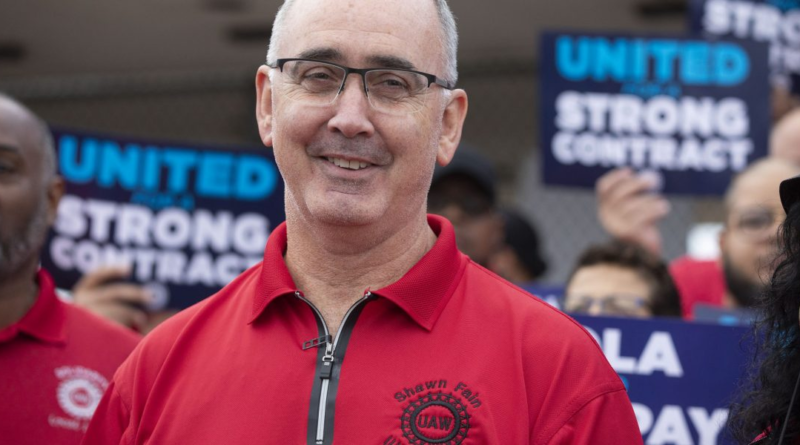U.S car industry would lose $5.5 billion if workers strike, report says. So far, negotiations have been rife with ‘theatrics and personal insults'
A United Auto Workers strike could cost the industry billions of dollars, according to a report released Thursday, highlighting the huge stakes involved in an upcoming union vote on whether to authorize a walk out.
If the UAW were to strike for just 10 days it could lead to economic losses of $5.5 billion across the entire industry, forecasts the consulting firm Anderson Economic Group. The estimate takes a comprehensive view, factoring in losses to workers and manufacturers, alongside the ripple effects a strike could have on car dealers and parts suppliers.
The UAW represents about 146,000 workers at the so-called Big Three U.S. car manufacturers: General Motors, Ford, and Stellantis—the company created from a merger of Fiat Chrysler and PSA Group in 2021. Union chapters are scheduled to vote on whether to authorize a strike next week. Meanwhile, the current labor agreement is set to expire on September 14 and the UAW has already said it will not extend the current deal.
By AEG’s calculations the strike would lead to lost wages of $859 million and manufacturer losses of $989 million, meaning that the union and automakers would lose $1.8 billion, as a direct result of the strike. AEG then roughly doubled that figure to calculate what it considers the true value of those losses to the firms, which brings the total estimated losses to $3.5 billion. The analysis goes on to include another $2.1 billion in losses from suppliers and car dealerships would incur as a result of a work stoppage.
“Consumer and dealer losses are typically somewhat insulated in the event of a very short strike,” AEG vice president Tyler Theile said in a statement. However, because inventories were about one-fifth of what they were in 2019, the last time the UAW went on strike dealers and customers could be affected “much sooner,” Theile said.
The 2019 strike lasted around six weeks and only took place at General Motors plants, rather than across all the Big Three. Even though it was limited only to GM, the strike cost workers $1 billion in wages and GM $2 billion in lost production. If a strike were limited to just a single automaker this time as well it would lead to around $1.4 billion in total losses, according to AEG. And that’s just for a 10-day strike, meaning costs could balloon even more should it go beyond that.
The UAW and the Big Three still have work to do
The union and the Big Three are still far from agreement on key issues this time around. Union demands include a 40% pay increase, guaranteed pensions for new hires, cost-of-living increases, and a request to hire all temporary workers as full-time employees. UAW president Shawn Fain has said he expects workers to be able to secure big gains in upcoming negotiations so long as they are prepared to strike for them.
However, Fain’s outspokenness and bullishness about the contract talks was met with skepticism, particularly from Stellantis, which has 43,000 union employees. The company’s chief operating officer, Mark Stewart, claimed the union’s requests might lead to job cuts down the line. In a letter to employees, first reported by Reuters, Stewart accused Fain of “theatrics and personal insults” when the union president hosted a Facebook livestream in which he threw a Stellantis contract offer into the trash.
Disagreements with the UAW aren’t the only workforce-related problems Stellantis has faced this year. In April, the company offered both factory and corporate workers buyouts in an effort to trim its headcount.
Stellantis declined to comment on AEG’s report, but said negotiations with the UAW bargaining committee were “constructive and collaborative.”
General Motors, the largest of the three companies, also criticized the union’s demands. The company said the union’s proposal would limit its ability to adjust to future market conditions and emphasized the many jobs it creates, not only directly, but also indirectly through suppliers and other businesses. GM added that it will “continue to bargain in good faith each day to support our team members, our customers and dealers, the community, our suppliers, and the business.”
Meanwhile, Ford has reportedly started preparing salaried, corporate employees for factory jobs, according to the Detroit Free Press. The company has asked engineers and other white-collar workers to take over duties such as filling parts orders and driving forklifts. Ford told Fortune “it looked forward to working with the UAW on creative solutions” at a time when the auto industry was “dramatically changing.”
The UAW and AEG did not respond to a request for comment.
Update, Aug. 18, 2023: This article has been updated with comments from GM and Ford.

